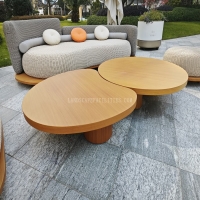Welcome to the website for landscape facilities products and knowledge.
What are the best ways to design landscape tables for use in areas with high exotic matter?
Designing landscape tables for areas with high exotic matter requires a unique approach to ensure durability, functionality, and aesthetic appeal. Exotic matter, often characterized by unusual physical properties, can pose challenges such as extreme temperatures, corrosive elements, or unpredictable interactions with materials. Here are the best ways to design landscape tables for such environments:
1. Material Selection: Opt for high-performance materials like reinforced polymers, corrosion-resistant metals (e.g., titanium or stainless steel), or composite materials that can withstand exotic matter’s effects.
2. Structural Integrity: Ensure the table design incorporates robust support systems, such as reinforced legs or modular frameworks, to handle potential stress or instability caused by exotic matter.
3. Adaptive Design: Consider modular or adjustable designs that can adapt to changing conditions, such as expandable surfaces or detachable components for easy maintenance.
4. Protective Coatings: Apply advanced coatings (e.g., nanotechnology-based finishes) to shield the table from corrosive or reactive exotic matter.
5. Aesthetic Harmony: Balance functionality with visual appeal by integrating sleek, modern designs that complement the surrounding landscape while meeting technical requirements.
By prioritizing durability, innovation, and adaptability, landscape tables can thrive in high-exotic matter areas, offering both practicality and style.
Related search:

Recommendation
Elliptical metal outdoor table with nested design, resembling wood grain, round table